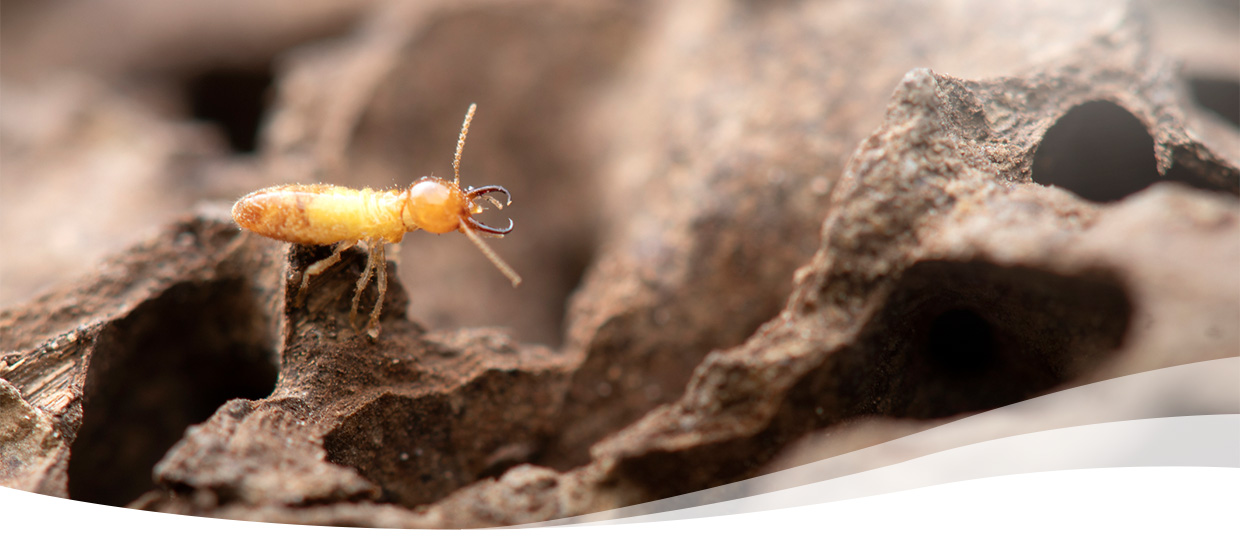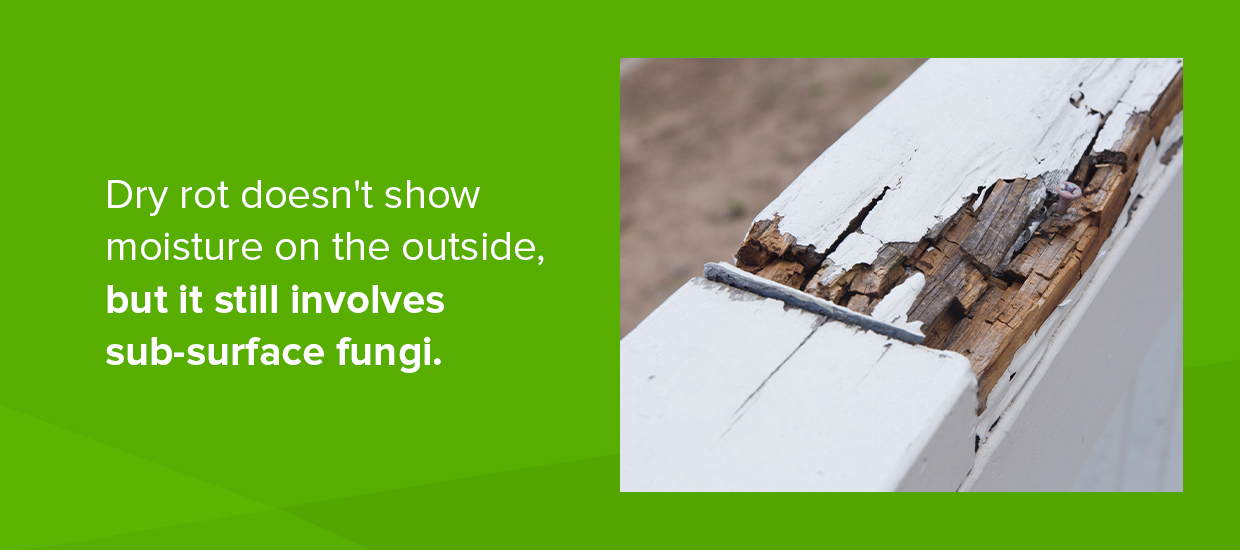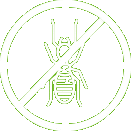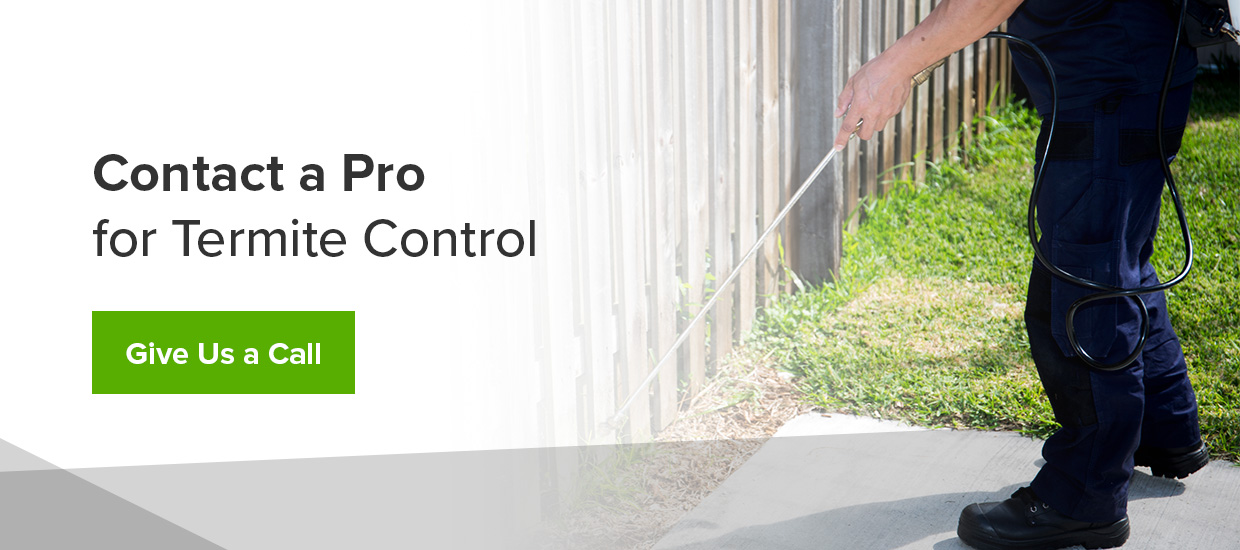Termite Damage vs. Wood Root

Structural problems are a big concern for many homeowners and business owners. Wood damage can be especially worrying because you often don’t see it until it’s incredibly expensive and difficult to fix. Two notable sources of wood damage are termites and wood rot. Both can cause problems that range from minor cosmetic issues to significant structural repairs.
Although they have some similarities, termites and wood rot have distinct features that can help you tell them apart. We’ll make the task a little easier by going over the signs of termites and wood rot, how to tell them apart and what to do about them.
How Can I Tell If I Have Termites?
Determining whether you have termites usually relies on looking for clues rather than the bugs themselves. Termites feed on cellulose, a material in wood and plants, making the lumber in a building a neverending feast. To get to the feast, termites bore into the wood and create “shelves.” They build small tunnels or thin tiers going through the wood, both appearing as vertical lines. This unique pattern of wood damage is a classic sign of termites.
Other common signs of termite infestation include:
- Mud tunnels: Mud tunnels are a sure giveaway. Termites use soil to create these tunnels and make a path to the wood. They spread out along walls, ceilings or foundations. They’re usually the color of soil and less than an inch in diameter.
- Discarded wings, droppings or dead bugs: After mating, termites lose their wings and search for a place to nest. If you find these wings lying around, you likely have more termites out of sight. Finding dead termites or their droppings can also point toward an infestation.
- Sagging, creaking or buckling: With enough time, the structural damage from termites can cause your floors or ceilings to sag, creak or swell. If you notice these problems, take action quickly.
- A musty smell: Termite damage sometimes has a musty smell similar to mold. Wood rot can have a similar smell, so this characteristic isn’t too helpful in distinguishing between the two.
- Clicking sounds: Termites often make clicking noises as they move through the walls.
- Hollow-sounding wood: If you knock on a piece of wood where you suspect termites, you might hear a hollow sound due to the holes they’ve made.
- Sticking doors and windows: Tunnels in door and window frames can cause the wood to lose its shape. Your doors and windows may start to stick.
Although you may not see them, it helps to know what termites look like. They often resemble carpenter ants — which can also damage wood — with a similar size and wings. Termites are usually around ¼- to ½-inch long with soft and cylindrical bodies, hard heads and straight antennae. Ants typically have a more defined waist and bent antennae. If you’re in our home state of Texas, you can find both subterranean and drywood termites. Both are light yellow to black.
What Does Wood Rot Look Like?

In buildings, wood rot usually occurs due to fungi. When the wood is exposed to continuous moisture, it becomes a great spot for fungi to grow. It can create a damp and musty smell and cause the wood to crack and soften.
This example reflects wet rot, but you can also have dry rot. Dry rot doesn’t show moisture on the outside, but it still involves sub-surface fungi. It causes the wood to shrink down into cubes, eventually creating a pattern like a giraffe’s skin.
Some common places you might find rot include:
- Windowsills and window frames
- Basements and attics
- Door frames
- Under sinks
- Decks
- Siding or paneling
To find wood rot, grab a flashlight and look around your home or building. Signs of wood rot include discolored patches, places where chunks are falling away, patches of inconsistent textures or wood that’s breaking into cube-shaped chunks. Sometimes, you can even see clear fungal growth. If you suspect rot, take a screwdriver and push it against the wood. You likely have wood rot if the screwdriver sinks in without any resistance.
Differences Between Termite Damage and Wood Rot
Both termites and rot cause wood damage that moves from the inside out, making them hard to spot until the problem is extensive. The ways they cause damage, however, are very different. When trying to determine whether you have a termite or rot problem, look at the following characteristics:
- Damage pattern: Generally, damage from termites and wood rot don’t look the same. Termites create vertical tunnels that run mostly parallel to each other, while rot causes the wood to become soft and spongy. Also, wood rot can cause cube-like chunks. Wood with termite damage usually breaks apart in long, thin pieces.
- Nearby signs: Wood rot only occurs with consistent exposure to moisture, so you would need to have a leak or another area that leads water to the wood. Termites usually show signs of being in a building, like the mud tubes and clicking sounds we discussed earlier.
- Location: Although termites can show up anywhere, wood rot usually sticks to the seams of the building. You might find it on windows, doors or roofs.
Both problems can be hard to spot, so don’t hesitate to call in a professional. A pest control specialist can look for termites and other wood-damaging bugs like carpenter ants.
What to Do About Termite Damage or Wood Rot
Once you know what you’re working with, you can make a plan of action. Since fungus and termite infestations both spread quickly, working fast can help you prevent worsening damage. If you catch it in time, you might be able to take care of minor instances of rotted wood yourself. You can replace or repair certain structures with a special epoxy resin. More pervasive damage or problems with crucial structural elements will probably require the help of a carpenter or dry rot professional.
A termite problem almost always calls for expert services. These bugs are notoriously difficult to get rid of, but pest professionals address all angles of termite control. They employ the right technologies to eliminate them and prevent them from returning. If the damage is particularly severe, you may also need a dry rot professional to help repair or replace the wood.
Contact a Pro for Termite Control
Termites can wreak havoc on a building, so prevention and early detection go a long way. If you already have termites, professional services can help you get rid of them for good. Across east Texas, homeowners and business owners turn to Barefoot Mosquito & Pest Control to keep termites at bay. We use minimal pesticides and offer recurring termite prevention plans to protect your space from termites and other wood-destroying creatures.
Still not sure if you have termites or wood rot? Give us a call, and we’ll get started on building an estimate and a plan to identify and eliminate any insects damaging your wood.

Get Rid of Pests Today!
Our naturally superior pest solutions will protect your home and yard from dangerous and annoying pests. Get started today by calling us or requesting a free quote online!

